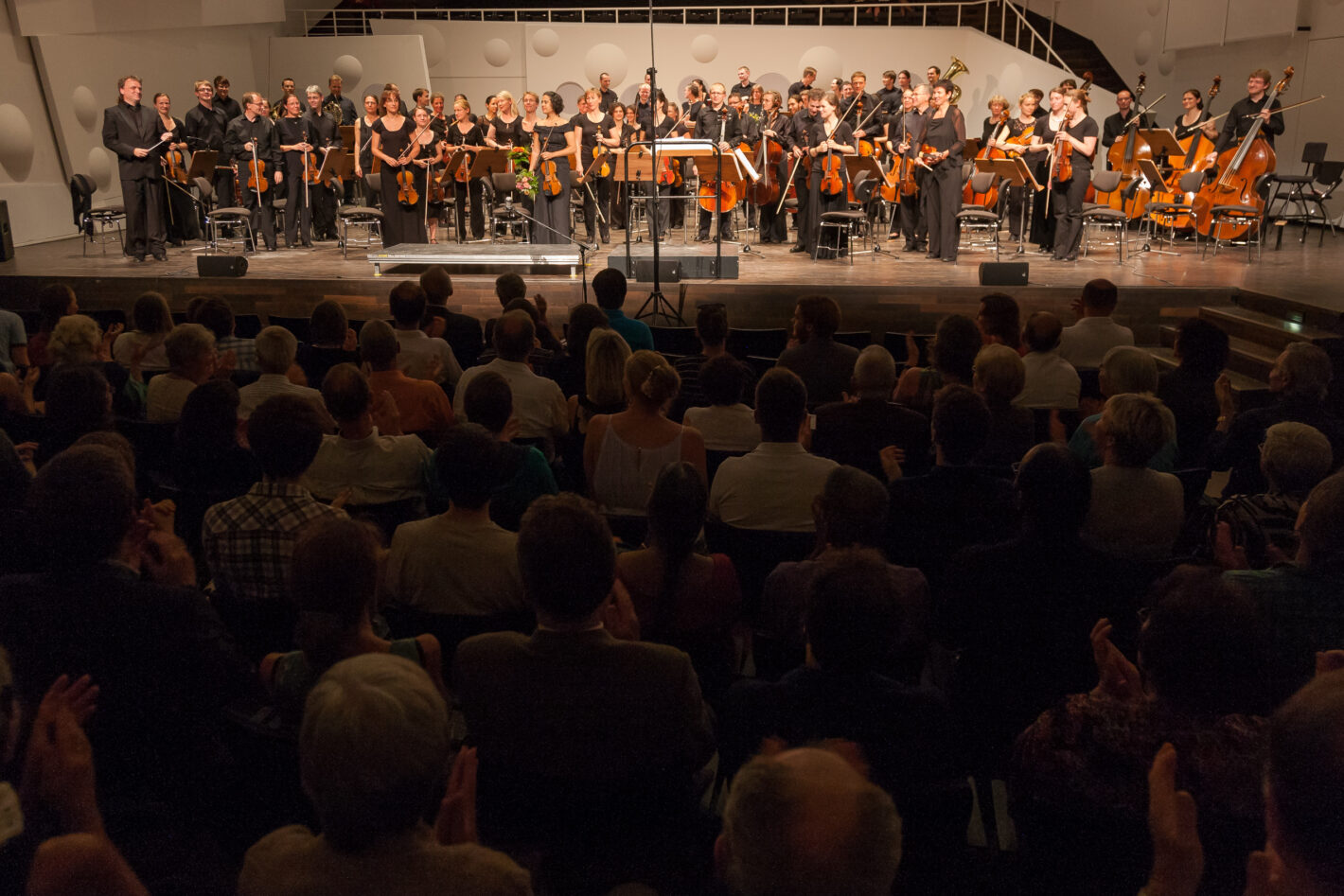Since my youth, I have enjoyed playing in amateur orchestras. Undoubtedly, a performance by amateurs cannot compete with recordings by renowned professional orchestras. But what motivates the high effort to rehearse pieces which are mostly more or less known in numerous rehearsals? I cannot provide a general answer. However, during the interruption of regular rehearsals caused by the corona pandemic, I became aware of a valuable aspect: how important it is to create a transient and, at the same time, beautiful ensemble sound together.
When playing music together, it is crucial to approach it with the same vision of the music being played. Each musician has numerous possibilities to shape his or her own tone and thus not only to fit into the ensemble sound but also to shape it actively. Neither too low nor too high, but to hit the right note. Neither too loud nor too soft, but to fit in. Astonishingly, this interplay succeeds with up to a hundred players, whereas teams of this size usually break up into subgroups.
A closer look reveals that the orchestra has an orderly and, thus, supporting structure. This clear division of tasks and assignment of responsibilities is necessary because the constant minor and necessary readjustments are carried out immediately. We already perceive a time offset of one-hundredth of a second – in this time the sound travels about 3.4 meters. In addition, there is the finite reaction time of our nervous system and the processing of these external stimuli into active physical movement, again combined with inherent inertia due to the weight of our body parts, to shape the sound. Unfortunately, for example, playing together by video conference with further significant delays due to the technology is not practical because of this. Through regular rehearsals and with the growing experience, it is possible to anticipate the music to be played and thus to create a coherent ensemble sound.
Because of the need for fast communication and with the idea of the ensemble sound, the role of the conductor is central, although not directly audible. The same applies to the body movements of the section leaders, which concretize the sound vision for the respective instrument group. Through the interaction, an ensemble sound is created with the orchestra. This is clearly more than the simple superimposition of individual parts and is essentially characterized by the shared sound vision as well as by a multi-layered listening to the different parts by all participants.
For the proper function, it is essential that the clear and obligatory hierarchy to which the individual positions, such as conductor, section leader, soloist, and tuttis, are subjects, is accepted and practiced by all. The awareness that the finite possibilities of each person can only approximately fulfill the assigned role should be self-evident. It is necessary to shape the sound from the given capabilities. No human being can master the absolute beauty of music, but everyone can contribute within the framework of his or her abilities to approach it. In the orchestra, a further dimension arises from the interplay to shape the ensemble sound. This beautiful sound of the interplay is of great importance for the life of us humans – especially in the present time.

